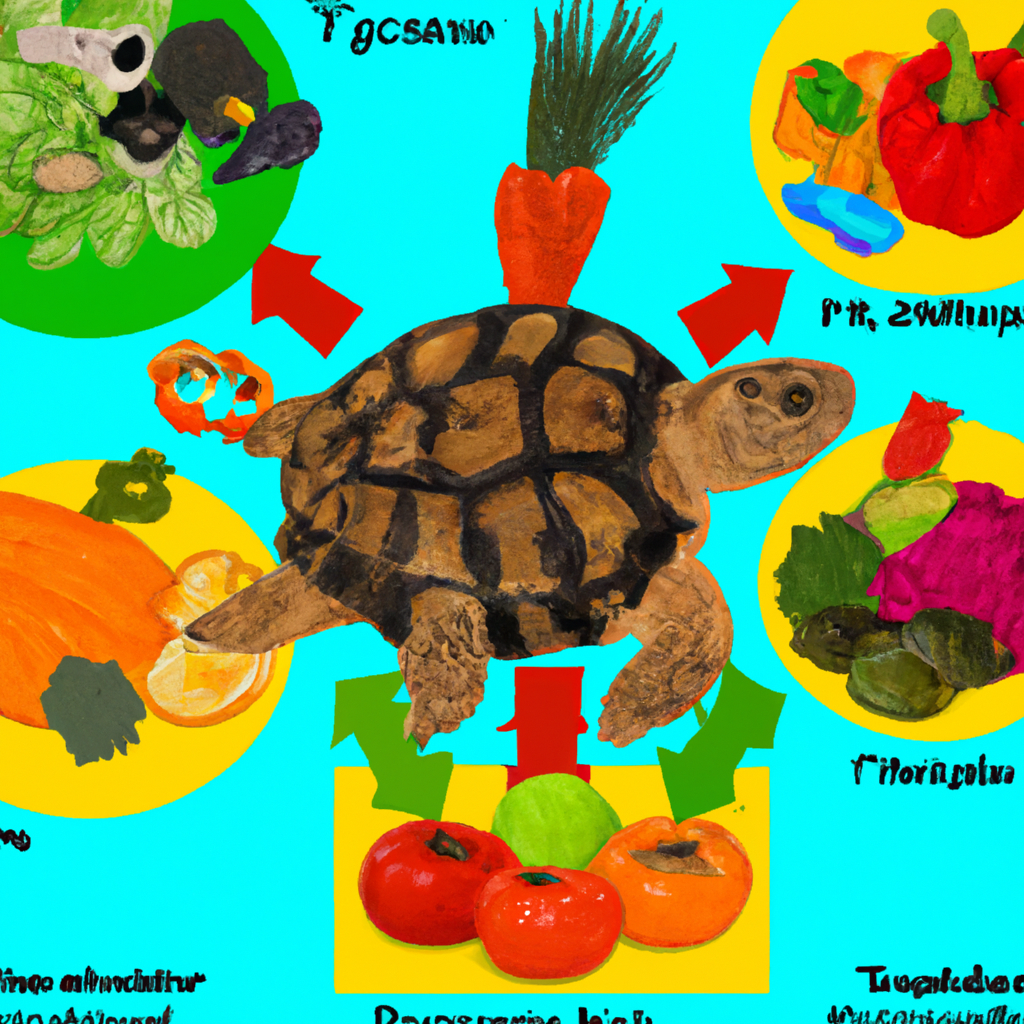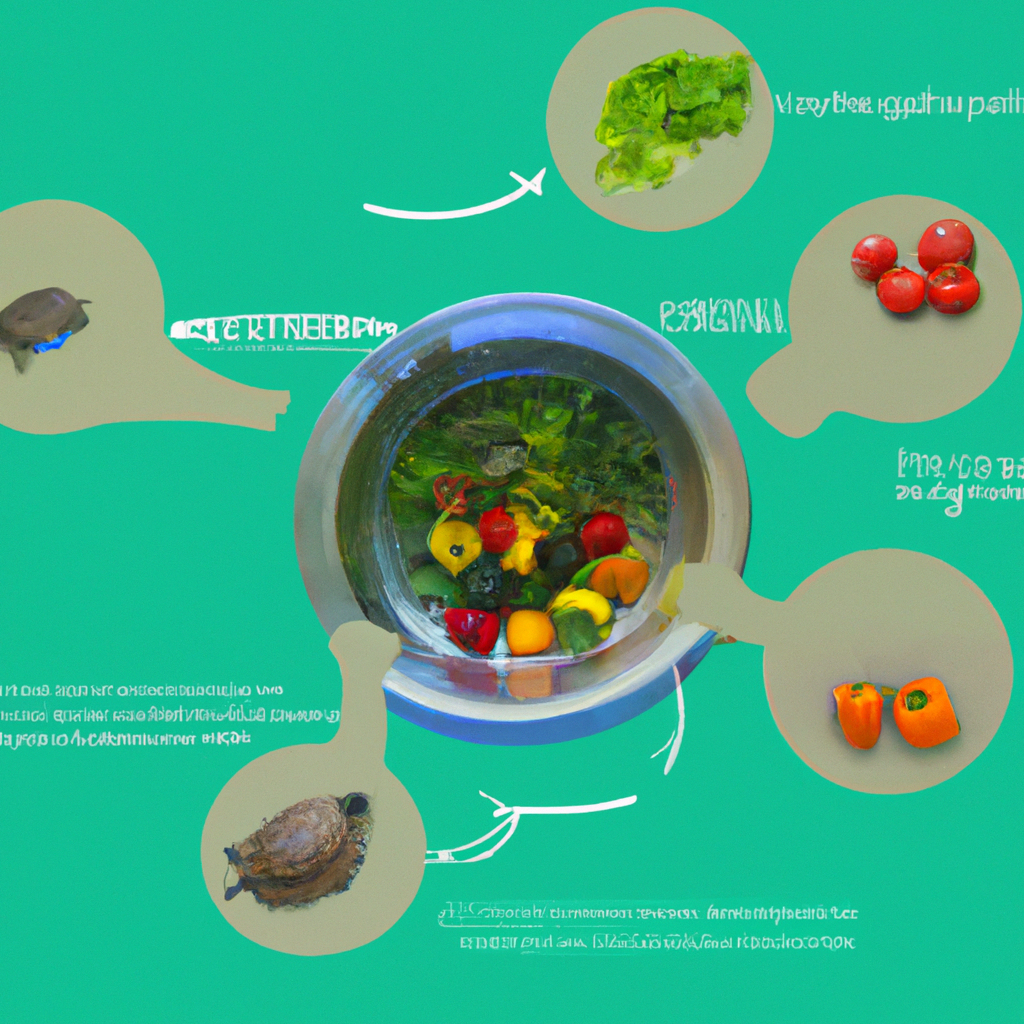If you’re a turtle enthusiast or a proud owner of a pet turtle, you’ll know that ensuring proper nourishment is essential for their overall health and well-being. In this article, we’ll explore the fascinating world of turtle nutrition, discussing the dietary needs and feeding habits of these incredible creatures. From the importance of a well-balanced diet to the different types of foods that can be included, get ready to unlock the secrets of turtle feeding and provide your shelled friend with the best care possible.

Types of Turtles
Herbivorous Turtles
Herbivorous turtles are fascinating creatures that solely rely on plant matter for their nutrition. They possess a unique ability to break down tough plant material using specialized beaks and powerful jaws. Some examples of herbivorous turtles include the green sea turtle, tortoises, and some species of freshwater turtles.
Carnivorous Turtles
Unlike their herbivorous counterparts, carnivorous turtles have a distinct taste for meat. They are equipped with sharp beaks and strong jaws, enabling them to capture and consume a wide range of prey. This group includes snapping turtles, softshell turtles, and some species of terrapins.
Omnivorous Turtles
Omnivorous turtles are the true food explorers of the turtle world. They have a varied diet that consists of both plant matter and small animal prey. These adaptable turtles have the flexibility to thrive in a variety of environments and can consume a wide range of food items. Examples of omnivorous turtles include the red-eared slider and the painted turtle.
Natural Diet of Turtles
Herbivorous Turtles’ Natural Diet
Herbivorous turtles primarily feed on various plant materials, such as algae, aquatic plants, grasses, and leaves. They have evolved to efficiently process and digest plant matter by utilizing specialized gut bacteria. Their grazing behavior helps maintain the balance of ecosystems and influences the distribution of certain plant species.
Carnivorous Turtles’ Natural Diet
Carnivorous turtles have a predatory nature and primarily feed on small animals, such as insects, fish, snails, and even small mammals. Their strong jaws and sharp beaks allow them to seize and devour their prey. They play an essential role in balancing aquatic food chains and regulating populations of certain organisms.
Omnivorous Turtles’ Natural Diet
Omnivorous turtles have a diverse diet, incorporating both plant matter and animal prey. They consume a variety of fruits, vegetables, aquatic plants, insects, and small fish. This dietary flexibility allows them to adapt to different environments and habitats, making them highly successful in the wild.
Nutritional Needs of Turtles
Essential Vitamins for Turtles
Turtles require a variety of vitamins to maintain optimal health. Vitamin A is crucial for their vision, growth, and reproduction, and can be found in dark leafy greens and orange fruits. Vitamin D helps with calcium absorption, which is essential for strong bones and shell development. Turtles can naturally synthesize vitamin D through exposure to sunlight. Vitamin C is important for their immune function and can be obtained from various fruits and vegetables.
Key Minerals for Turtles
Minerals play a vital role in a turtle’s overall well-being. Calcium is crucial for the development and maintenance of their shells and bones. Turtles can acquire calcium from sources such as calcium-rich foods and exposure to natural sunlight. Phosphorus is another essential mineral that works in conjunction with calcium to ensure proper bone growth. It can be found in foods such as insects, meat, and fish.
Adequate Protein Intake for Turtles
Protein is an essential macronutrient for turtles, as it is responsible for growth, maintenance, and repair of tissues. Herbivorous turtles acquire protein from plant sources such as legumes, while carnivorous turtles obtain protein from meat and insects. Omnivorous turtles have the advantage of being able to consume both plant and animal protein sources.
Feeding Habits of Turtles
Feeding Frequency
The frequency of feeding for turtles varies depending on their age, species, and dietary requirements. As a general rule, young turtles should be fed daily or every other day, while adult turtles can be fed every two to three days. It’s important to refrain from overfeeding as it can lead to obesity and other health issues.
Portion Sizes
When it comes to portion sizes, it’s crucial to consider the size and age of the turtle. Younger turtles require smaller, more frequent meals, while adult turtles can handle larger portions. It’s important to monitor their food intake and adjust portion sizes accordingly to ensure they are receiving the right amount of nutrients without excess.
Food Presentation and Enrichment
To stimulate natural feeding behaviors, it’s beneficial to present food in a way that engages the turtles’ senses. For herbivorous turtles, offering a variety of leafy greens and vegetables encourages foraging behavior. For carnivorous turtles, presenting live or moving prey can help simulate hunting behavior. It’s essential to provide enrichment opportunities to keep turtles mentally stimulated while they eat.

Commercial Turtle Diets
Advantages of Commercial Turtle Diets
Commercial turtle diets provide a convenient and nutritionally balanced option for turtle owners. They are specifically formulated to meet the dietary needs of turtles and often contain a mixture of plant matter, protein sources, vitamins, and minerals. These diets can help maintain proper nutrition without the need for extensive meal planning or sourcing of specific ingredients.
Disadvantages of Commercial Turtle Diets
While commercial turtle diets offer convenience, they should not completely replace a turtle’s natural diet. Some commercial diets may not perfectly mimic a turtle’s natural food preferences, leading to potential nutritional deficiencies over time. It’s crucial to supplement commercial diets with fresh foods and ensure a varied diet to ensure overall health and well-being.
Supplementing Commercial Diets
To ensure turtles receive a well-rounded diet, it’s important to supplement commercial turtle diets with fresh foods. This can include leafy greens, fruits, vegetables, and live or frozen prey, depending on the turtle’s dietary requirements. Offering a variety of foods allows turtles to obtain a wider range of nutrients and promotes overall health.
Feeding Techniques for Turtles
Hand-Feeding
Hand-feeding can be an effective technique for establishing trust and bonding with your turtle. It involves offering food directly to the turtle using your hand or a feeding tool. This method allows for close observation of the turtle’s eating habits and ensures they are receiving their food.
Plate Feeding
Plate feeding involves placing the turtle’s food on a flat plate or dish. This technique allows for easy monitoring of the turtle’s food intake and reduces the risk of unnecessary ingestion of substrate or other foreign objects. Plate feeding can be especially helpful for turtles that are housed in aquatic setups.
Water Feeding
Some turtles prefer to feed in water, especially those that primarily consume aquatic plants or prey. Water feeding involves placing the food directly into the turtle’s enclosure, allowing them to eat while submerged. It’s essential to ensure the water is clean and free of any contaminants before using this feeding technique.

Feeding Challenges and Solutions
Refusal to Eat
Turtles may occasionally refuse to eat due to various factors, including stress, illness, or environmental changes. If your turtle refuses to eat for an extended period, it’s essential to monitor their behavior and consult with a veterinarian if necessary. Offering a variety of food options and ensuring a suitable environment can help stimulate their appetite.
Overfeeding
Overfeeding can be detrimental to a turtle’s health and can lead to obesity and other related health issues. It’s crucial to monitor portion sizes and feeding frequency to prevent overfeeding. Following the recommended guidelines for the turtle’s species and age can help maintain a healthy feeding routine.
Nutritional Deficiencies
Nutritional deficiencies can occur if a turtle’s diet is unbalanced or lacking in essential nutrients. Regularly assessing their diet and providing a variety of food items can help minimize the risk of nutritional deficiencies. If symptoms of a deficiency are observed, such as shell abnormalities or lethargy, consulting with a veterinarian can help address the issue.
Proper Care and Maintenance of Reptile Food
Storing Fresh Foods
Storing fresh foods properly is vital to maintain their freshness and nutritional quality. Leafy greens, fruits, and vegetables should be stored in a cool, dry place or in the refrigerator for extended freshness. It’s important to remove any spoiled or moldy food to prevent potential health issues for your turtle.
Preparing Homemade Diets
Homemade diets can be a beneficial option for turtle owners who want to have more control over their pet’s nutrition. When preparing homemade diets, it’s crucial to ensure a balanced mix of protein, fruits, vegetables, and other essential nutrients. Consulting with a reptile veterinarian or nutritionist can provide guidance on formulating a proper homemade diet.
Rotating Food Variety
Rotating food variety is important to provide turtles with a diverse range of nutrients. Offering different fruits, vegetables, and protein sources ensures they receive a well-rounded diet. It’s essential to introduce new foods gradually and monitor the turtle’s response to identify any potential allergies or sensitivities.

Feeding Recommendations by Turtle Species
Red-Eared Slider
Red-eared sliders are omnivorous turtles that require a balanced diet of both plant and animal matter. Their diet should include leafy greens, fruits, vegetables, and a variety of protein sources such as insects, fish, and pellets formulated specifically for aquatic turtles.
Painted Turtle
Painted turtles are also omnivorous and require a varied diet. They should be offered a mix of leafy greens, vegetables, fruits, and protein sources such as insects, worms, and small fish. It’s important to provide a balanced mix of both plant and animal matter for their overall health.
Box Turtle
Box turtles are omnivorous but lean more toward the herbivorous side. Their diet should consist mainly of leafy greens, vegetables, fruits, and some protein sources such as insects, worms, and snails. Providing a mix of both plant and animal matter ensures they receive the necessary nutrients for their well-being.
Conclusion
Feeding turtles properly is essential for their overall health and well-being. Understanding the different types of turtles, their natural diet, and nutritional needs is crucial for meeting their dietary requirements. Whether feeding commercial diets, creating homemade meals, or supplementing with fresh foods, maintaining a balanced and varied diet is key. By following proper feeding techniques and addressing feeding challenges, turtle owners can ensure their pets thrive and live long, healthy lives. Remember to consult with a reptile veterinarian or nutritionist for species-specific feeding recommendations and any concerns regarding your turtle’s diet. Happy feeding!

